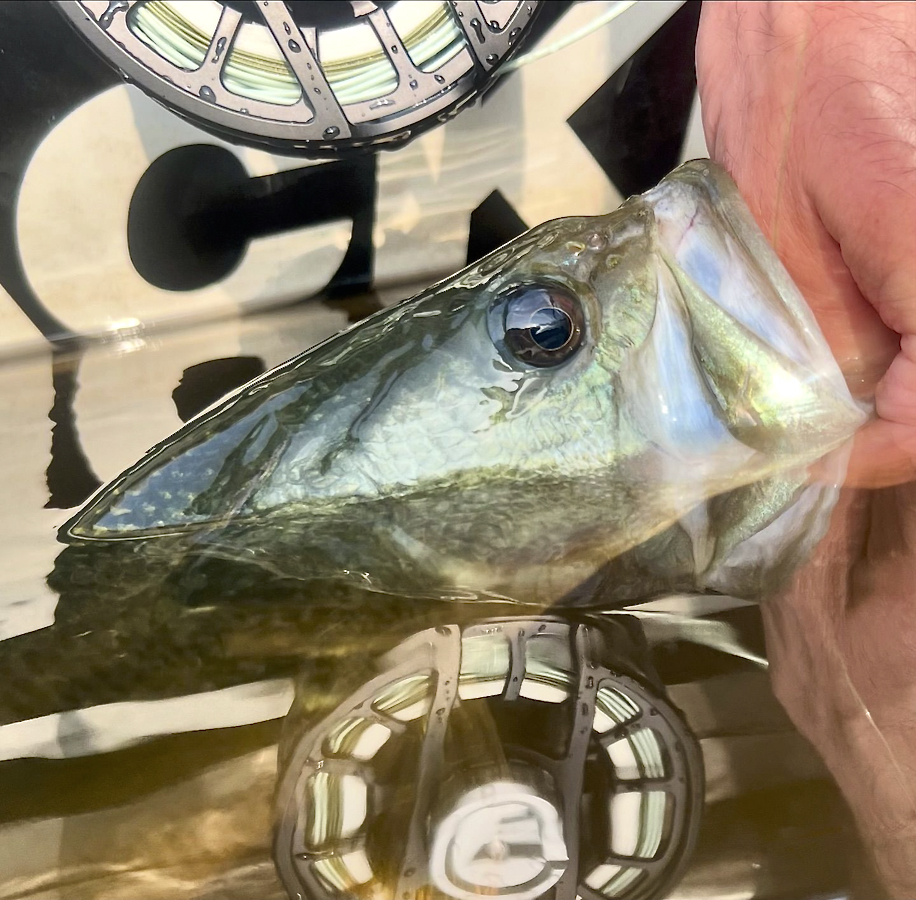Ask MidCurrent: Straight vs. Tapered Leaders for Bass Fly Fishing
Question: I’ve heard and read that a lot of bass fly anglers use straight instead of tapered leaders. Is this true? And if so, how and why does this work?
Answer: This topic, straight and tapered leaders, often sparks lively debate among bass fly anglers. While both options have their merits, it’s true that many seasoned anglers have come to prefer straight leaders for bass fishing for a number of practical reasons.
The Simplicity of Straight Leaders
One of the primary reasons bass fly anglers gravitate towards straight leaders is their sheer simplicity. Unlike tapered leaders, which consist of multiple sections of decreasing diameter, a straight leader is exactly what it sounds like—a single piece of monofilament or fluorocarbon line. This straightforward design offers several benefits that appeal to bass anglers of all skill levels.
Setting up a straight leader is a breeze compared to its tapered counterpart. Anglers can simply tie one end of the leader material to their fly line and the other to their tippet or, more likely, straight to the fly, eliminating the need for complex knots or multiple sections. This simplicity not only saves time on the water but also reduces the chances of knot failure, a crucial factor when battling hard-fighting bass.
Cost-Effectiveness: More Bang for Your Buck
In addition to their simplicity, straight leaders often prove to be more cost-effective than tapered options. A spool of high-quality monofilament or fluorocarbon line suitable for straight leaders can last an angler multiple seasons, depending on usage. This longevity translates to significant savings over time, especially when compared to pre-made tapered leaders that may need frequent replacement.
Furthermore, the versatility of straight leader material allows anglers to customize their setups on the fly, adapting to different fishing conditions without the need for multiple specialized leaders. For example, one basser on the MidCurrent team carries three spools of clear mono—8lb, 12lb, and 17lb—that cover all of his bases (basses?) for fishing everything from clear-water smallmouth headwaters to murky, log-jammed largemouth lairs. This flexibility not only saves money but also streamlines the overall fishing experience.
Turning Over Big Flies with Ease
Bass fly fishing often involves using larger, heavier flies than those typically employed for trout or other species. Streamers, poppers, and bulky terrestrial patterns are staples in the bass angler’s fly box, and these flies require a leader that can turn them over effectively during the cast.
Straight leaders, particularly those in the 12-30 pound test range, excel at handling these larger flies. The uniform diameter and increased stiffness of a straight leader provide the necessary power to turn over hefty bass flies, ensuring they land on the water with precision and minimal tangling. This improved casting performance can make a significant difference in presenting flies accurately to bass holding tight to cover or along structure.
Bass Behavior and Leader Shyness
One of the most compelling arguments for using straight leaders when bass fishing is the nature of the quarry itself. Unlike some other species, bass are generally not considered leader-shy. This means they are less likely to be spooked by the sight of a thicker, more visible leader in the water.
This characteristic of bass behavior allows anglers to use heavier, more abrasion-resistant leader material without sacrificing their catch rates. The ability to use stronger leaders is particularly advantageous when fishing around submerged logs, rocks, or vegetation where bass often lurk. A robust straight leader provides the necessary strength to pull bass away from such structure, reducing the chances of break-offs during the fight.
Durability and Knot Strength: Built to Last
The durability of straight leaders is another factor that makes them appealing to bass fly anglers. With fewer knots involved in the setup, straight leaders have fewer potential points of failure compared to their tapered counterparts. This increased reliability is crucial when targeting aggressive fish like bass, which are known for their powerful strikes and acrobatic fights.
Moreover, the simplicity of a straight leader setup allows anglers to focus on perfecting a single knot—typically the connection between the leader and the fly line. This concentration on a single connection point can lead to stronger, more consistent knots, further enhancing the overall durability of the rig.
When Tapered Leaders Shine
While straight leaders offer numerous advantages for bass fly fishing, it’s important to note that tapered leaders still have their place in certain situations. For instance, when delicate presentations are required or when fishing with smaller flies in clear water conditions, a tapered leader may provide better performance and improved stealth.
Additionally, some anglers find that tapered leaders offer superior casting feel and accuracy, particularly when using lighter fly rods or fishing in windy conditions. The gradual reduction in diameter of a tapered leader can help transfer energy more efficiently during the cast, resulting in smoother, more precise presentations.
In the end, the choice between straight and tapered leaders for bass fly fishing often comes down to personal preference and the specific fishing conditions at hand. However, the trend towards using straight leaders among experienced bass fly anglers is undeniable, and for good reason.
The simplicity, cost-effectiveness, and ability to turn over large flies make straight leaders an excellent choice for most bass fishing scenarios. Their durability and knot strength provide the confidence needed to tackle hard-fighting fish in challenging environments. Moreover, the fact that bass are not typically leader-shy allows anglers to prioritize strength and abrasion resistance without sacrificing their chances of a successful catch.
As with any aspect of fly fishing, experimentation is key. Anglers new to bass fly fishing or those considering a switch to straight leaders should give them a try in various fishing situations. By comparing performance, ease of use, and overall effectiveness, each angler can determine whether straight leaders align with their fishing style and preferences.
Ultimately, the goal is to find a leader setup that instills confidence and allows for the most enjoyable and productive time on the water. For many bass fly anglers, straight leaders have proven to be the winning formula, combining simplicity with performance in a way that perfectly suits the pursuit of these hard-fighting freshwater game fish.












